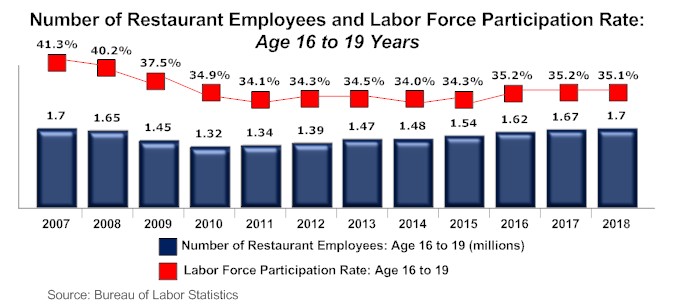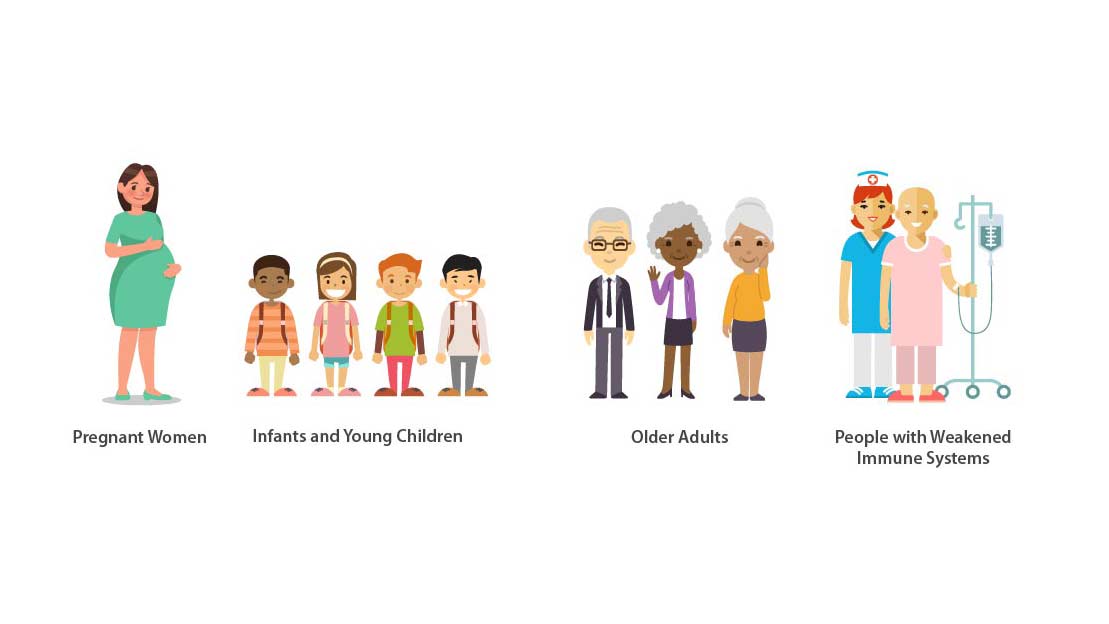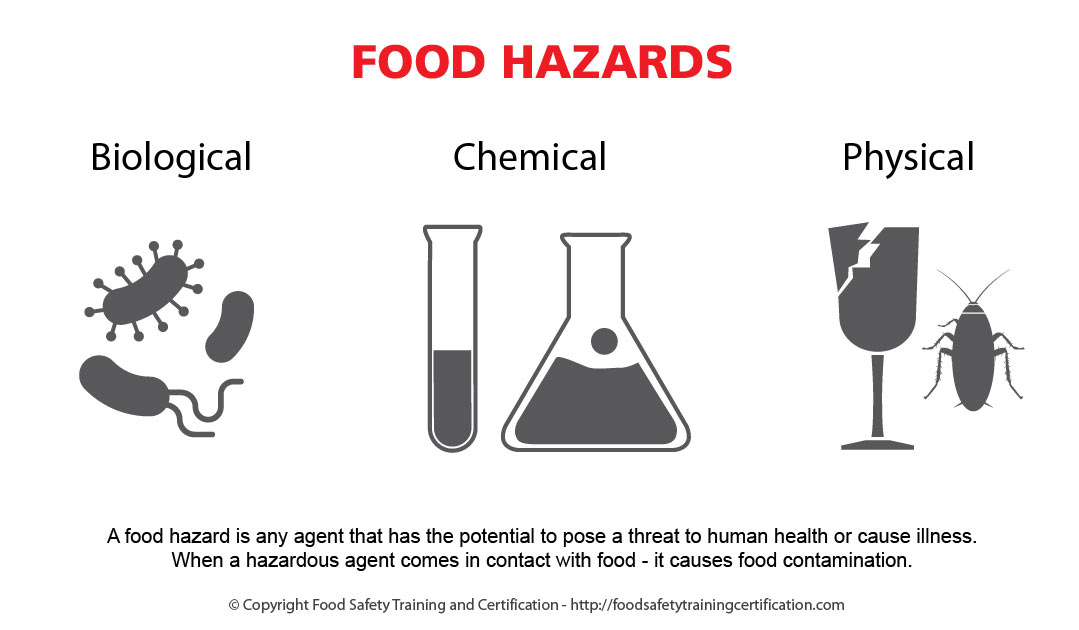Food safety should not only be a food service establishment’s top priority for patron’s health – but it affects the sales and continued patronage of an establishment. A single mistake by an untrained employee can cause a foodborne illness outbreak from a food service business and be a detriment to its’ future success.
By understanding and implementing recommended safe food handling practices on a day-today basis, food service establishments can not only reduce opportunities for contamination, but they can also strengthen their ability to respond effectively should a foodborne illness or an outbreak occur – so as not to lose customers and sales.
Restaurant Teen Worker Statistics
According to the U.S. Department of Labor, Bureau of Labor Statistics (BLS), restaurants employ about one-third of all working teenagers in the U.S.
Roughly 1.7 million teens (age 16-19) were employed in the restaurant industry in 2018.
For many teens, this is their first job experience. So, because it could be a teenager’s first job – and the temporary situation of seasonal employment – both are major reasons why providing proper training is essential to maintaining a food safe environment.

Seasonal Food Worker Training Principles for Success
When hiring and training any new food service employee, there are some important principles to follow for success:
- Train Equally and Uniform. Whether seasonal, part-time, or full-time staff member, ensure all employees receive the same comprehensive food safety training. A uniform training program should be created that identifies job function and training required. Training should be identified as received, completed, and documented complete by trainer.
- Training Evaluation Period. Upon initial training, the employee should be monitored and evaluated, and corrected if needed.
- Re-Enforce Training. Employees should be reminded of food safety principles and procedures repeatedly to re-enforce training.
- Learn about foodborne pathogens, cross contamination, cold and hot food safety, and best practices to prevent foodborne illness.
- Food Manager ANSI Certification: $99.00 - Valid in all States
- Food Handler Training: Only $7.00!
- 10% OFF: Enter Promo Code "train10off" at Checkout
Cost of Foodborne Illnesses
Combating foodborne illnesses is a top priority because, according to the Centers for Disease Control and Prevention (CDC), foodborne ailments cause about 325,000 hospitalizations and 5,200 deaths nationwide each year.
Foodborne illnesses also cost the United States billions of dollars each year. One foodborne illness outbreak can cost a business thousands of dollars and:
- Loss of customers and sales
- Loss of reputation
- Negative media exposure
- Lowered staff morale
- Lawsuits and legal fees
- Staff missing work
- Increased insurance premiums
- Staff retraining
What are the symptoms of foodborne illnesses?
Foodborne illness is sometimes called “food poisoning”. Foodborne illnesses are infections or irritations of the gastrointestinal (GI) tract caused by food or beverages that contain harmful bacteria, parasites, viruses, or chemicals. A foodborne illness outbreak is when two or more people get the same illness after eating the same food.
The most common causes of foodborne illness are bacteria and viruses such as Salmonella, norovirus, Clostridium perfringens, Campylobacter, Listeria monocytogenes, and Staphylococcus aureus.Symptoms of foodborne illnesses depend on the cause. Common symptoms of many foodborne illnesses include:
- vomiting;
- diarrhea or bloody diarrhea;
- abdominal pain;
- fever;
- chills.
Symptoms can range from mild to serious and can last from a few hours to several days.
People at Higher Risk for Foodborne Illnesses
Anyone can get a foodborne illness. However, some people are more likely to develop foodborne illnesses than others, including:
- infants and children;
- pregnant women and their fetuses;
- older adults;
- people with weak immune systems.
These groups also have a greater risk of developing severe symptoms or complications of foodborne illnesses.

Food Contaminants
- Biological: Biological pathogens are the greatest threat to food safety. They include viruses, parasites, fungi, and bacteria
- Chemical: Foodservice chemicals can contaminate food if they are used incorrectly. This group includes cleaners, sanitizers, polishes, machine lubricants and toxic metals
- Physical: Foreign objects like hair, finger nail, dirt, bandages, metal staples, and jewelry

How Food Generally Becomes Unsafe
- Time-temperature abuse: Food stayed out too long at room temperature
- Cross-contamination: Pathogens can be transferred from o0ne surface of food to another
- Poor personal hygiene: Food handlers can cause a foodborne illness if they fail to wash their hands after using the restroom, come to work sick, cough or sneeze on food and touch or scratch wound, and then touch the food.
Food Safety Steps
- Clean: Wash hands and surfaces often.
- Separate: Don’t cross-contaminate.
- Cook: Cook to proper temperatures.
- Chill: Refrigerate promptly.

Summary
- Foodborne illnesses are infections or irritations of the gastrointestinal (GI) tract caused by food or beverages that contain harmful bacteria, parasites, viruses, or chemicals.
- Anyone can get a foodborne illness. However, some people are more likely to develop foodborne illnesses than others, including infants and children, pregnant women and their fetuses, older adults, and people with weakened immune systems.
- Symptoms of foodborne illnesses depend on the cause. Common symptoms of many foodborne illnesses include vomiting, diarrhea or bloody diarrhea, abdominal pain, fever, and chills.
- The only treatment needed for most foodborne illnesses is replacing lost fluids and electrolytes to prevent dehydration.
- Foodborne illnesses can be prevented by properly storing, cooking, cleaning, and handling foods.



